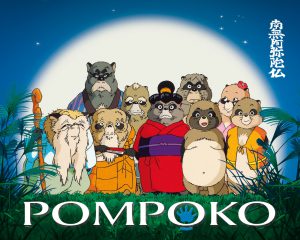This summer I worked with my Ford mentor, Professor Hiromi Tsuchiya Dollase from the Chinese and Japanese Department on Environmentalism in Japan, a four-week joint program with Professor Peipei Qiu and Yunling Yang.
From the 1960s through the 1990s, Japan enjoyed remarkable economic development known as Japan’s “bubble economy”. However, behind such rapid economic growth and massive accumulation of profits were a series of serious and some of which irreversible environmental and social problems. Under the Ford project, I set out to explore various environmental issues that plagued Japan towards the end of the twentieth century and helped collect course materials for my Ford mentor’s new fourth-year Japanese course in the spring of 2019 on environmentalism in Japan.
During the first days, I researched with Yunling books and articles that dealt with various forms of pollution and environmental issues in Japan since the 1960s including but not limited to air pollution, water pollution (Minamata disease), nuclear radiation, earth erosion and natural disasters. The annotated bibliographies and book list we compiled out of our research not only enabled us to contextualize those environmental issues, but would also serve as an important resource for third-year Japanese students. Moreover, our research also pointed us to some impactful Japanese film producers and writers who confronted environmental issues in their works. By the end of the second week, I had read, under the guidance of my Ford mentor, original Japanese texts such as articles and artworks by “the God of Manga,” Osamu Tezuka, two books by the science fiction writer Shinichi Hoshi, as well as viewing Isao Takahata’s animated film Pom Poko with my mentor. Set in the late 1960s, this film depicts Japanese racoon dogs’ resistance against humans’ suburban development that threatened their forest habitat. After a careful discussion of the film and literary works, my Ford mentor and I were able to select the crucial course materials and create the syllabus for the new fourth-year Japanese course.
For the second half of the project, I was committed to transcribing NHK animated videos of Osamu Tezuka as well as clips from Takahata’s film Pom Poko, which would be used as listening and reading materials for the fourth-year course. My final focus of the project was to prepare a presentation on Haiku, a traditional form of Japanese poetry that depicts the beauty of nature and advocates for human-nature coexistence, which I shall present in Professor Dollase’s class next semester. A field trip to the Met Museum to see the Edo period paintings — “the Poetry of Nature”, as well as a visit to Ms. West, a former Japanese instructor at Vassar and a Hiroshima bomb survivor, also significantly added to my understanding of environmentalism in Japan.
The Ford project with Professor Dollase this summer was definitely one of the most rewarding, fulfilling and enjoyable experiences I have ever had at Vassar. Not only did I make great progress in my understanding of various environmental issues in Japan as well as in my Japanese language skills, but also I felt incredibly lucky to spend time with and learn from my Ford professors and fellow Ford scholar on a personal level. It is an experience that I am and will always be grateful for.


